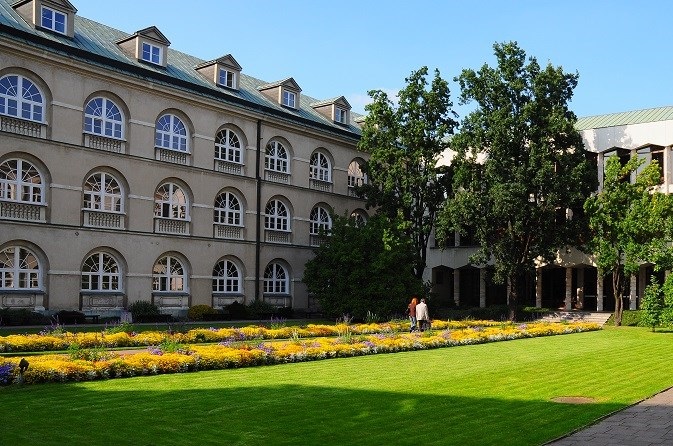City centre

This church was built in 1786 by Greek Orthodox merchants living in a small community in Lublin. There was a need to build a new temple as the Orthodox church in Ruska Street was given to the Greek-Catholic Church in the 17thc. The Lublin Greek Orthodox parish was subordinated to the Patriarch in Constantinople, but the small local community was unable to support the new temple financially, so consequently it began to fall into disrepair. ...

The idea of creating a city garden by the western border of Lublin came from the Chief City Engineer Feliks Bieczyński. The garden in the English style was probably designed by Vernier, a well-known landscape gardener from Puławy. ...

Erected in the years 1924-1928 according to the design by Major of the Polish Army Mieczysław Dobrzański, the building was made with bricks from the demolished Orthodox Cathedral of the Exaltation of the Holy Cross that once stood in Litewski Square. The official opening of the Soldier’s House, named after the Marshal Józef Piłsudski, was held in 1933.After World War II the edifice hosted many various institutions e.g. an operetta theatre and a cinema. ...

The origins of the cemetery are connected with an ordinance of the Police Committee of Both Nations from 1792 ordering relocation of overcrowded church graveyards outside the city. The new cemetery was located on the premises bought from the Birgittine Order on the western outskirts of Lublin. The area was planted with linden trees and many locals started to call the place “the cemetery under linden trees.” The name of the street – Lipowa (Linden) Street - stems from it too. ...

Built in the years 1865-1867 in an eclectic style according to the design by Ludwik Szamota, the building is a replica of the Europejski Hotel in Warsaw. It has always enjoyed a reputation of a modern, fully equipped facility with exquisite customer service. On the strength of the last will of the Michelson Family, the property was bequeathed to the Lublin Charitable Society. Having been damaged during World War II, the building was fully restored and for many years served as a hostel of the Polish Tourist and Sightseeing Society (PTTK). ...

The Catholic University of Lublin is the oldest higher education institution in the city and the first Catholic university in Eastern Europe. It was established in 1918 on Idzi Radziszewski’s initiative, who later became the first rector. The university was housed in the former monastery of St. Louis Bertrand’s Dominican Order, which during the time of partitions of Poland was converted into army barracks still used until the 1920s. The buildings have remained university property to the present day. In the 1970s a fire destroyed the frontal part of the facilities and they were reconstructe ...

The largest parish of Evangelical denomination east of the Vistula River is located in Lublin. The Parish Church of the Holy Trinity stands on the corner of Żołnierzy Niepodległej Street and Ewangelicka Street. ...

The building of the current Town Hall was created as a result of the reconstruction of the former church and monastery complex belonging to the Discalced Carmelite friars, which was destroyed in a fire in 1803. After the fire, the friars moved to the former convent of the Discalced Carmelite nuns on Świętoduska Street. The destroyed buildings were bought by the City Hall with the intention of locating the new seat of the city authorities here. ...

The Lubomirski Palace at Litewski Square was the property of many prominent Polish families. It is one of the most architecturally and historically interesting buildings in Lublin. In the XVI century, a Renaissance Firlej family manor house with features of defensive architecture stood in this place. In the XVII century, the property belonged to the Lubomirski family, who rebuilt the building according to the design of the outstanding Flemish architect Tylman van Gameren. It was a baroque, one-storey building with a high roof with dormer windows and corner alcoves. ...

The obelisk was erected in 1826 on Stanisław Staszic’s initiative to commemorate the signing of the Polish-Lithuanian Union in Lublin in 1569 – one of the most important events in the history of Lublin. ...
Page 1 of 3













